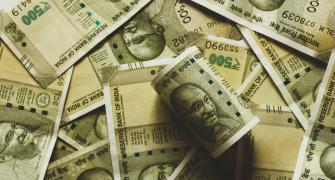Recent weeks have seen substantial media coverage of the highly emotive and potentially volatile issue of reservations in institutions of higher education, especially the few that can be deemed as islands of excellence such as the Indian Institutes of Technology, the Indian Institutes of Management, and the All Indian Institute of Medical Sciences.
Even as the government gropes to deal with the Pandora's box opened by an ageing and crafty politician, who is probably more driven by Machiavellian instincts than affirmative action, yet another politician now wishes to make her existence noticed by extending reservations to all public and private institutions.
The Reservation Issue: Complete Coverage
As was to be expected, the issue has again begun to create schisms in society, with the emergence of more organised pro- and anti-quota groups. Hopefully, this brinkmanship on the part of the United Progressive Alliance will give way to sagacity and a pragmatic solution will soon be arrived at which can meet the legitimate needs of the entire strata of the society.
Having said so, it is indeed a stark reality that in the days of wildly fluctuating fortunes on stock exchanges, stratospheric prices of property, dollar salaries for jobs being delivered within India, and skiing/piano lessons for the kids of those who have made it big in recent times, there is another India that needs some attention not only from the media, but also from all those who are fortunate to even dream of having their children compete in IIT/IIM entrance exams.
I will start with some raw statistics, largely culled from the government's own surveys. Over 18 per cent of the 27+ million annual births happen to girls in the age group of 15 to 19, and over 49 per cent of all girls bear their first child before they turn 20 -- a statistic that will horrify any reader of this financial paper who has a girl child in the age group of 15 to 20!
India has the largest number of malnourished children in the world, with as many as 60 million who do not have access to even two regular meals in a day. Over 25 per cent of all children in the age group of 5 to 11 years and 37 per cent of all children in the age group of 11 to 19 are not in school.
This has lead to a spectre of having almost 125 million children, currently between 5 and 19 years, who are doomed to lead a life of total or near total illiteracy and who will never be able to participate in any future growth of the country.
Over 260 million Indians are officially eking out an existence below the poverty line. While in percentage terms, this has been a welcome decline over the last 10 years, nevertheless these are shocking in absolute numbers.
The Shanghai dreams of the nation's financial centre Mumbai have to be tempered with the reality that as much as 49 per cent of its population comprises slum dwellers. The City of Joy (Kolkata) has 33 per cent of its residents consigned to slums, while the nation's capital, with acre-sized bungalows for many of its past and current members of Parliament, has almost 20 per cent residents living in slums (and Jhuggi Jhopri clusters as they are called there).
Notwithstanding the improved economic growth rate in the last 10 years, the official unemployment rate has inched up from about 6 per cent to over 9 per cent in 2005, (and this is excluding the tens of millions more who are classified as intermittently employed).
Even now, over 200 million citizens are directly dependent upon farming. In the absence of any real reforms in the agriculture sector, it is no surprise that as per government's own admission, over 100,000 farmers have committed suicide in the last 5 years.
Eighty five per cent of the rural India and about 60 per cent of the urban India is still dependent upon ground water resources to quench its thirst. With the rapid increase in population leading to a dangerous decline in groundwater table and with an ineffective water resources development policy, many of India's poorest (and most populous) states such as Bihar and Rajasthan are witnessing an unprecedented shortage of even potable water, leading to deaths happening due to thirst.
And finally, the last miserable statistic pertains to the reality that one of the demographically youngest countries also has a very large absolute number of people above 60 years of age.
The number of 60 and above will touch almost 100 million by 2016. Even at present, at about 700,000, India has only a third of the 2 million hospital beds needed to serve the current population, and just about 9 per cent of the entire population is covered under any kind of healthcare scheme.
It is in the context of these harsh realities that the ones (like the undersigned) who are fortunate not to be a part of this 'other' India should reflect on the subject of equal opportunities in some depth, rather than getting influenced with the superficial treatment this matter usually receives in our legislatures and the media.
In our own myriad ways -- both as individuals and as business enterprises -- we can make some micro contributions to tackle these challenges, rather than participating in only armchair debates/sms campaigns, and doling out homilies such as those coming from some of the industry captains, who merely wish to cherry-pick the most talented and fortunate few tens of thousands on the pretext of having to compete globally rather than applying a part of their fortune (and their wisdom and managerial excellence) to enable the creation of more opportunities for many more millions.






